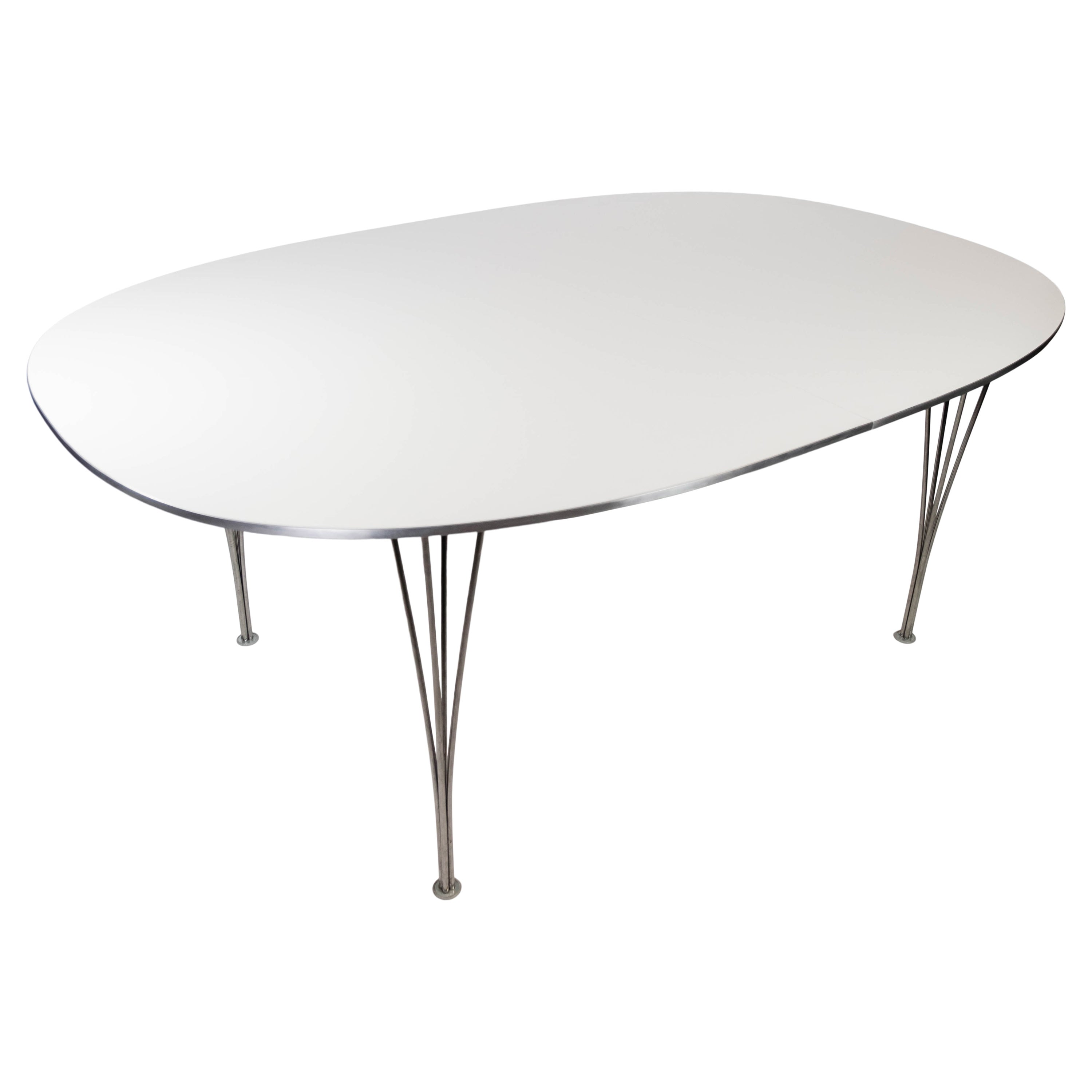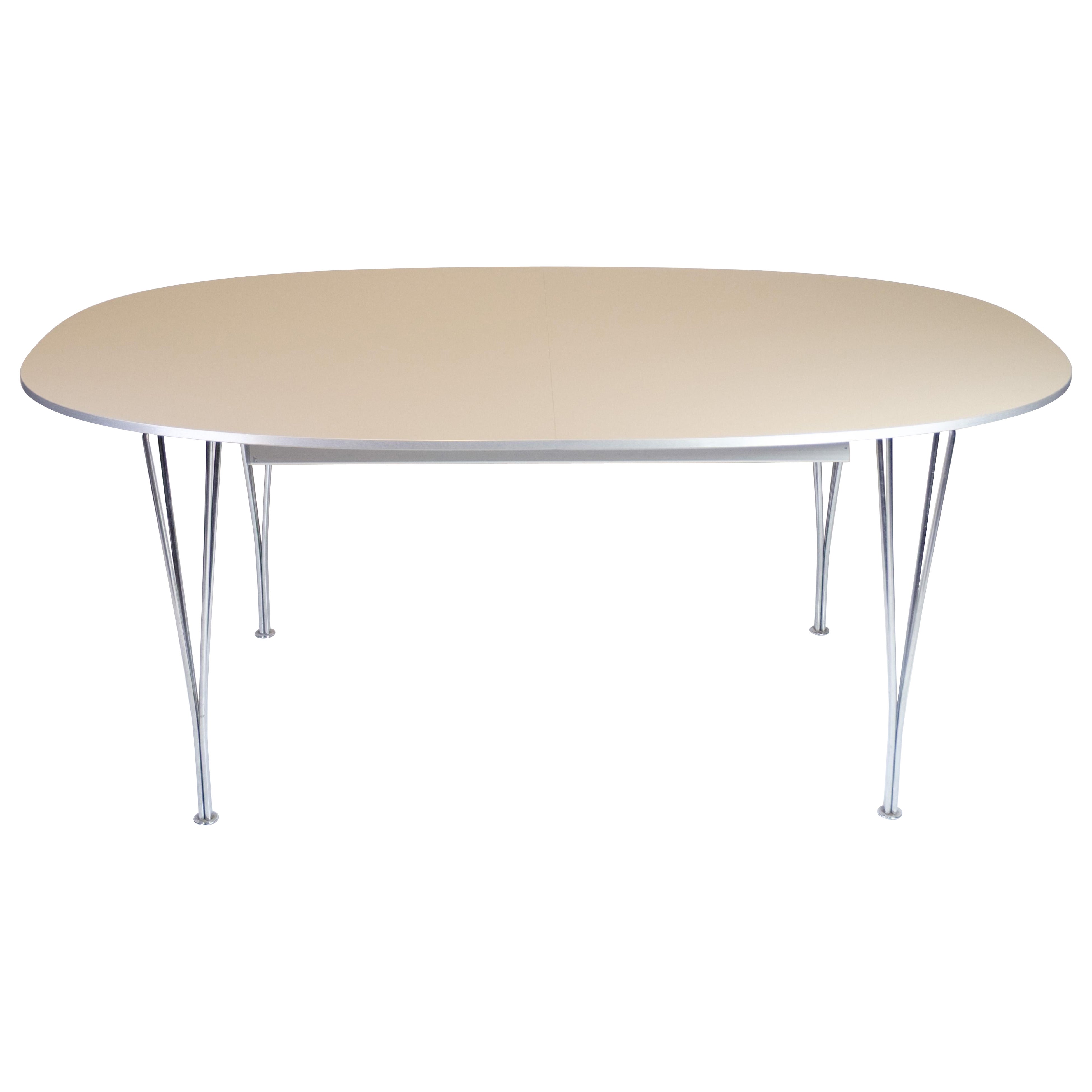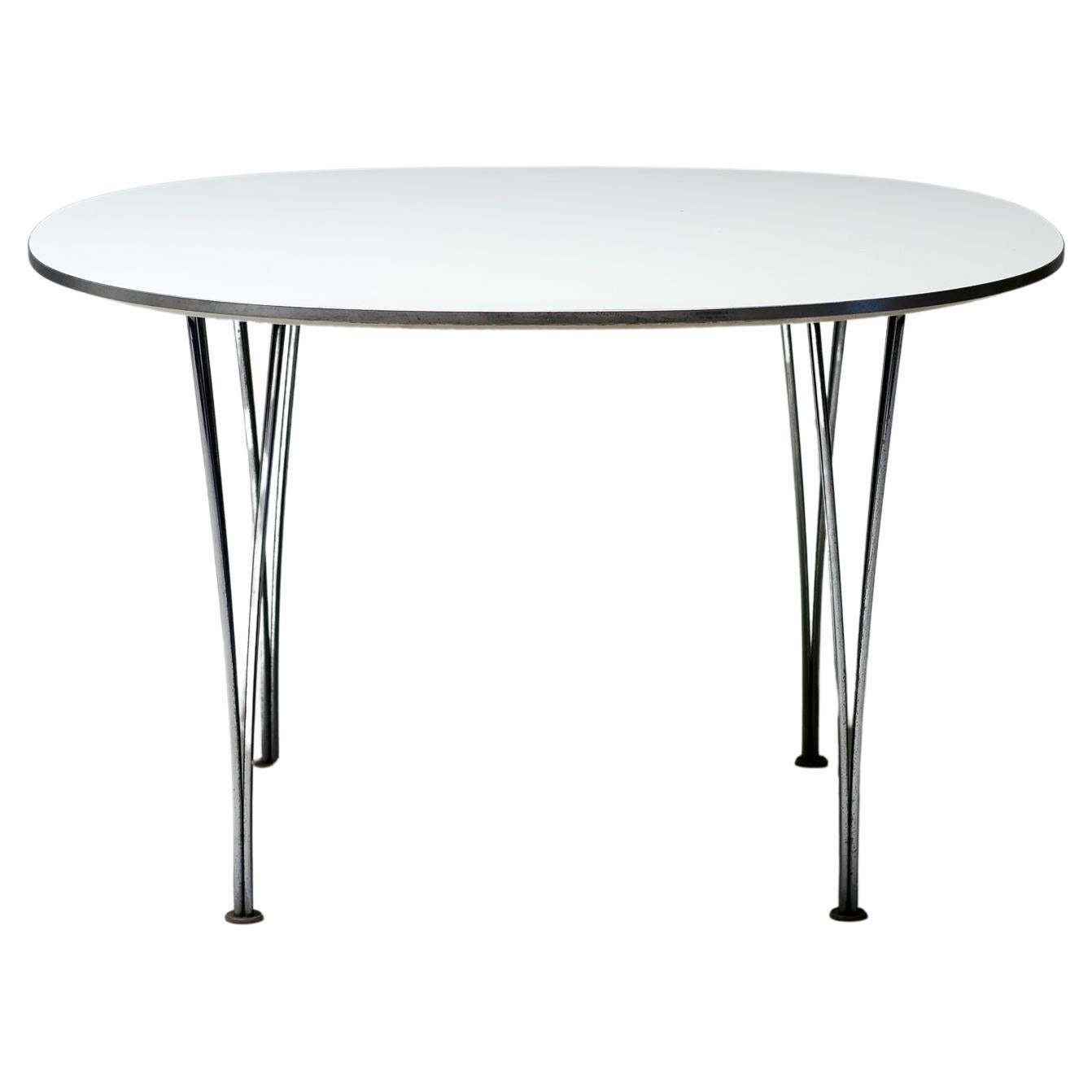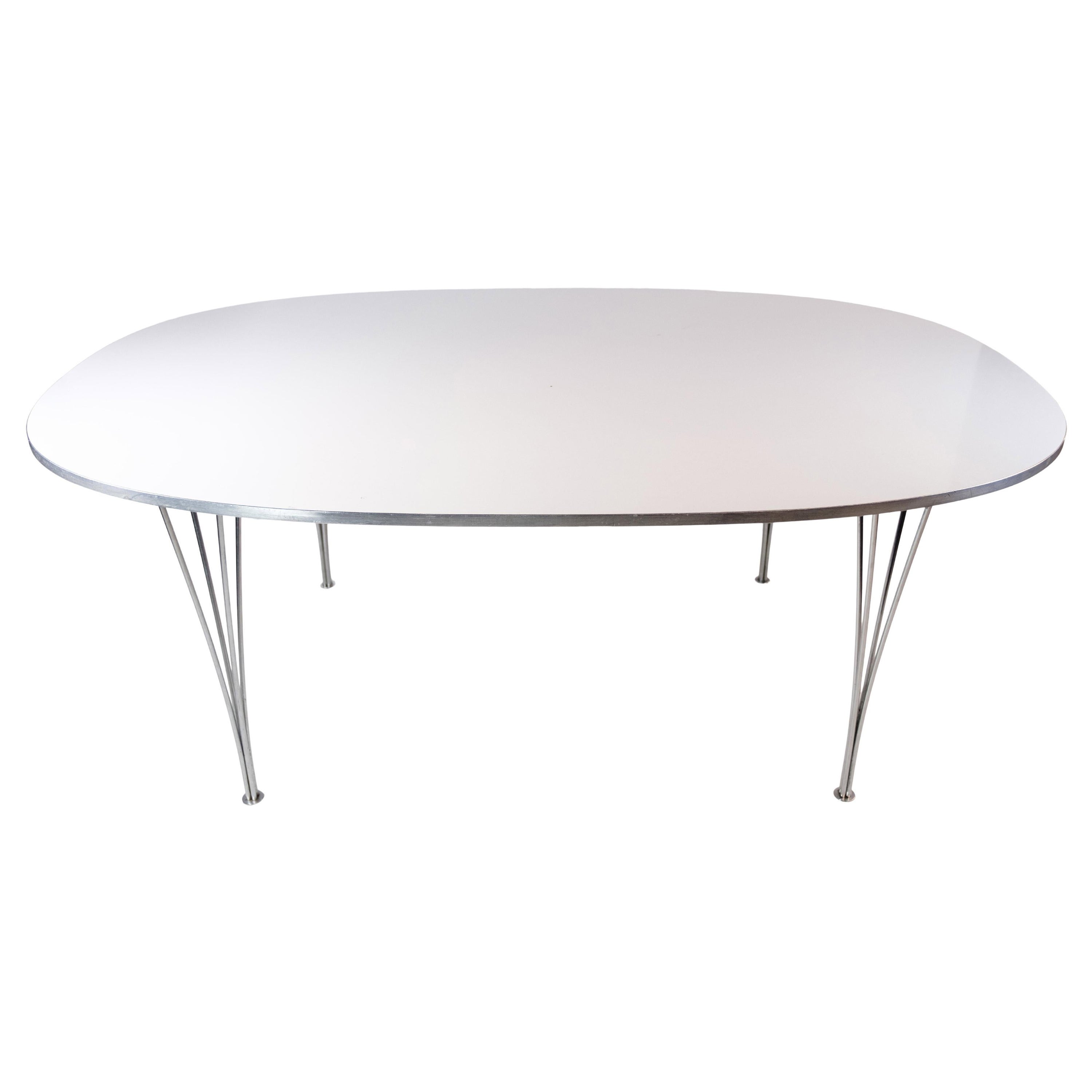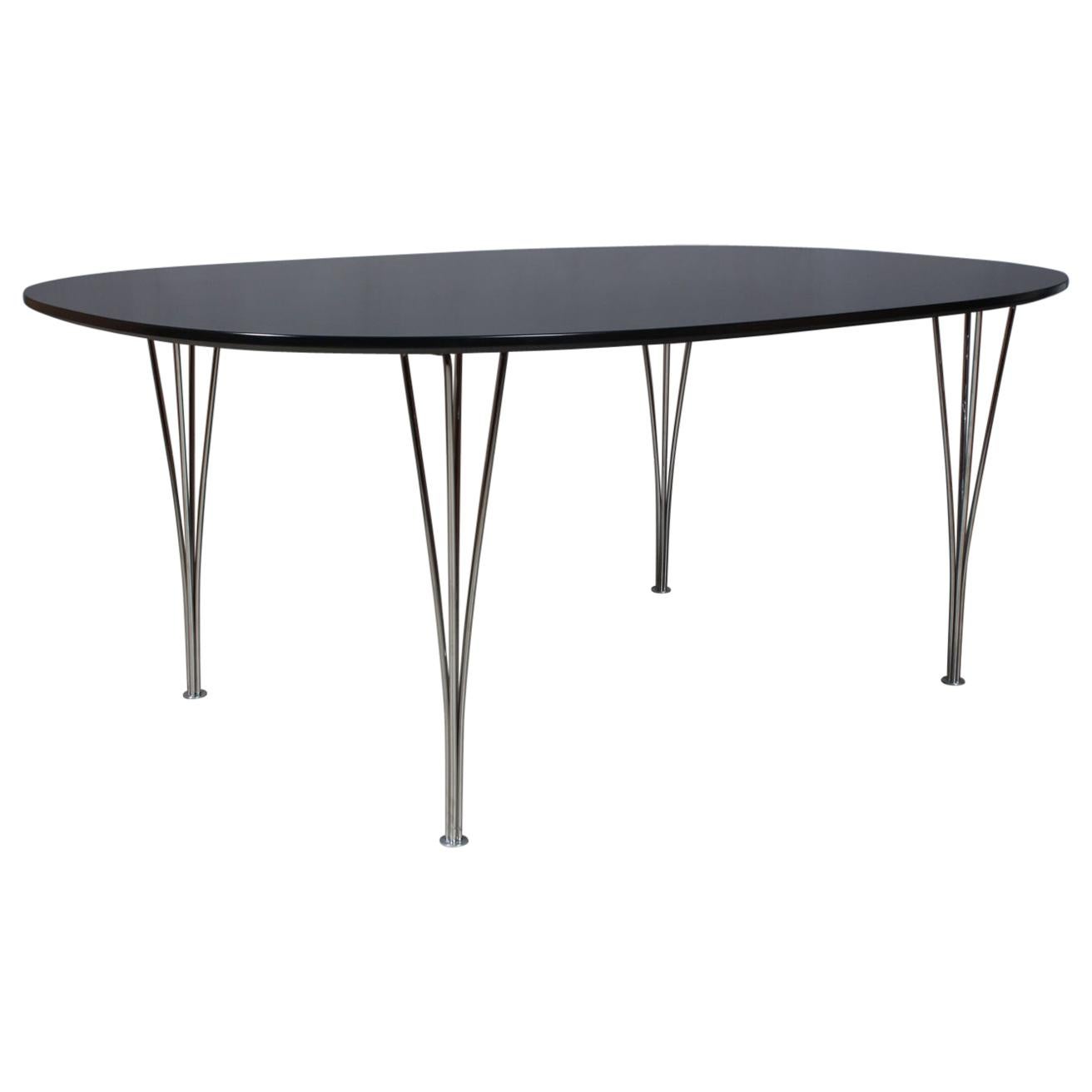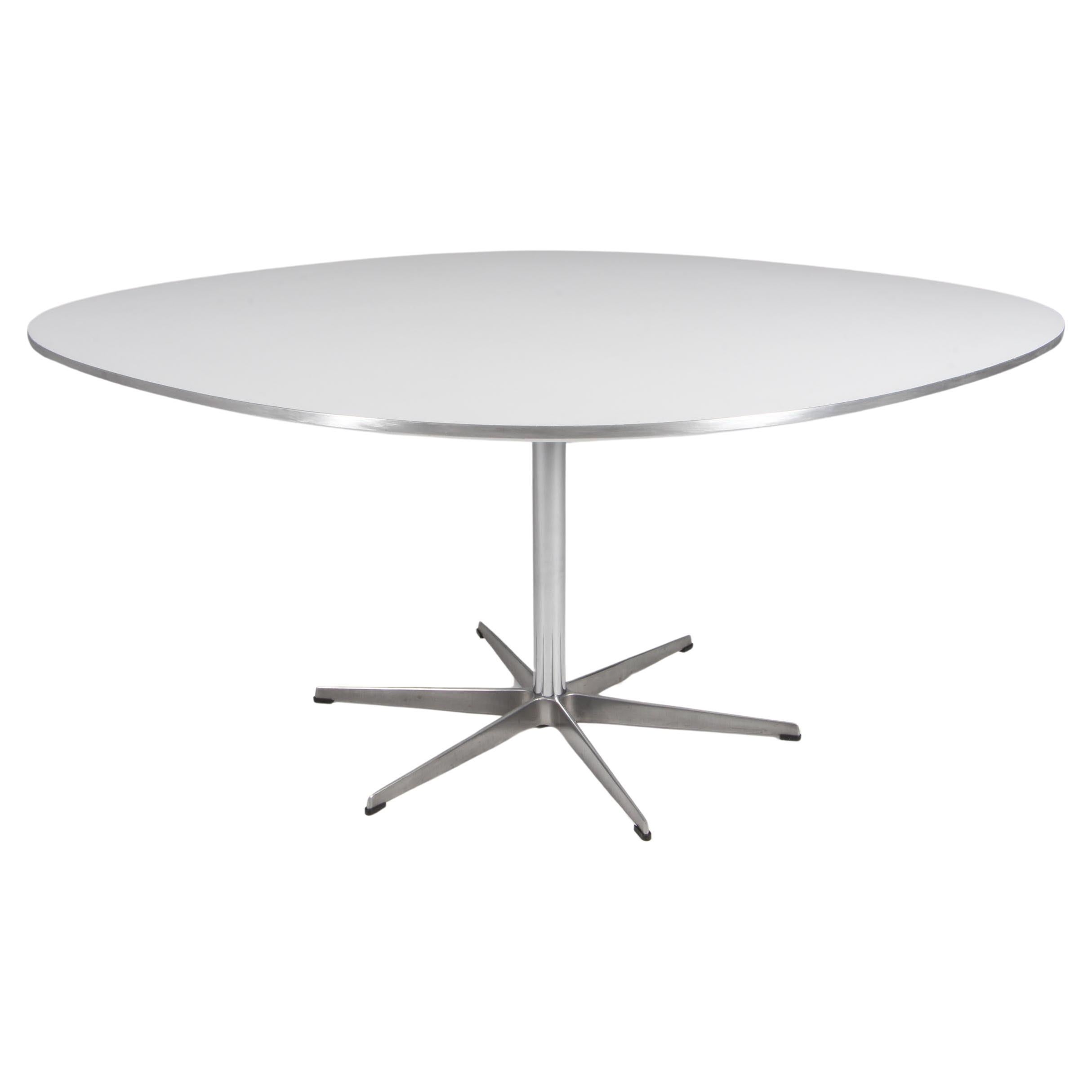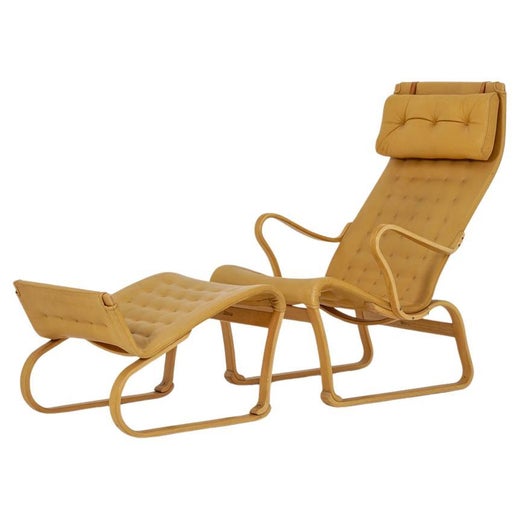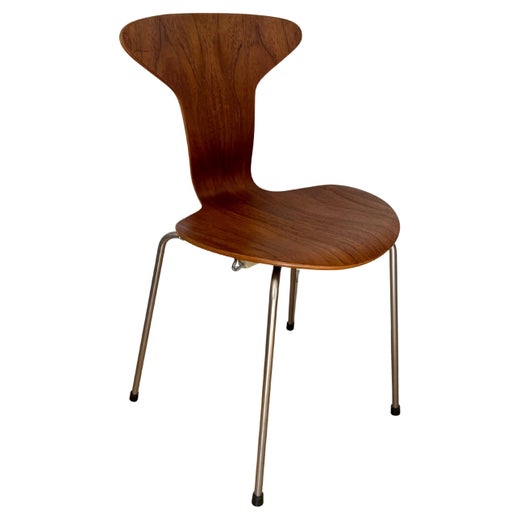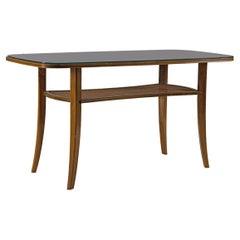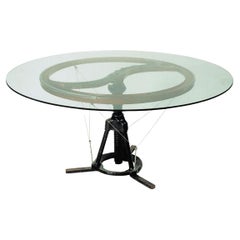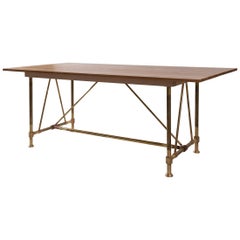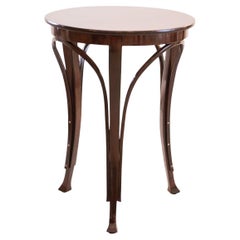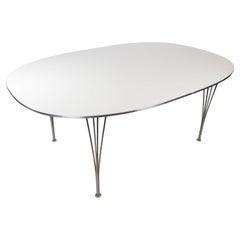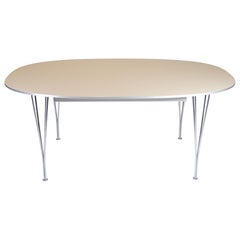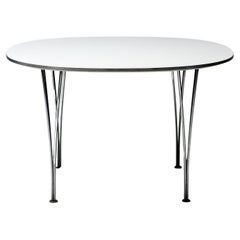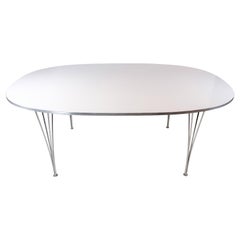Piet Hein, Mid-Century Modern, Super Ellipse Table Manufactured by Fritz Hansen
About the Item
- Creator:
- Dimensions:Height: 27.56 in (70 cm)Width: 47.25 in (120 cm)Depth: 94.49 in (240 cm)
- Style:Mid-Century Modern (Of the Period)
- Materials and Techniques:
- Place of Origin:
- Period:
- Date of Manufacture:1968
- Condition:Wear consistent with age and use. The table-top has some spots as shown on one image, as somebody has mistakenly used too long screws for the fixing part of the legs. Materials & Techniques Notes: White laminate and chromed steel.
- Seller Location:Vienna, AT
- Reference Number:Seller: 350011stDibs: LU1050212810852
Bruno Mathsson
As the descendant of four generations of Swedish master cabinetmakers, Bruno Mathsson was born to design furniture. Mathsson was known as a methodical perfectionist who made usefulness the fundamental attribute of his iconic lounge chairs, tables, armchairs and other works, yet he was also a ceaseless experimenter, who constantly searched for improvements in form, materials and methods of design.
Like the Finnish designer Alvar Aalto, Mathsson was one of the first Scandinavians to embrace undulating, biomorphic forms in furniture. His early pieces such as the Eva and Pernilla series of chairs incorporate dramatically flowing bent beechwood frames, making them some of the most instantly recognizable works of 20th-century design.
Mathsson was also a pioneer of ergonomics — he is said to have based the contours of his chairs on the impression his body made when he sat in a snow bank — and used supple, accommodating woven webbing for seats. His concern for practicality is shown by pieces such as the Maria table. An elegant design with gate legs and hinged leaves, the table measures more than nine feet long when fully extended, but folds down to just nine inches in thickness.
From the mid-1940s through the 1950s, Mathsson focused on architecture, designing and building houses with insulated, triple-glazed window walls and heated floors — construction that flew in the face of traditional wood-clad Swedish residential design, and consequently met with some skepticism. He returned to furniture in the 1960s, employing an entirely new suite of materials: Stainless-steel framing and mesh seats feature in pieces like the Jetson chair; with the mathematician Piet Hein, Mathsson designed the Super-Elliptical table, which has a laminate top and four-part tubular steel legs that sprout like flower stems from a single base.
Bruno Mathsson’s stylistic flexibility as a designer made him a creator whose pieces meet all tastes and needs.
Find vintage Bruno Mathsson dining tables, seating and other furniture on 1stDibs.
Arne Jacobsen
The eye-catching work of the Danish architect and designer Arne Jacobsen often introduces new collectors to mid-20th century furniture. With their fluid lines and sculptural presence, Jacobsen’s signature pieces — the elegant Swan chair and the cozy-yet-cutting edge Egg chair, both first presented in 1958 — are iconic representations of both the striking aesthetic of the designers of the era and their concomitant attention to practicality and comfort. Jacobsen designed furniture that had both gravitas and groove.
Though Jacobsen is a paragon of Danish modernism, his approach to design was the least “Danish” of those who are counted as his peers. The designs of Hans Wegner, Finn Juhl, Børge Mogensen and others grew out of their studies as cabinetmakers. They prized skilled craftsmanship and their primary material was carved, turned and joined wood. Jacobsen was first and foremost an architect, and while he shared his colleagues’ devotion to quality of construction, he was far more open to other materials such as metal and fiberglass.
Many of Jacobsen’s best-known pieces had their origin in architectural commissions. His molded-plywood, three-legged Ant chair (1952) was first designed for the cafeteria of a pharmaceutical company headquarters. The tall-backed Oxford chair was made for the use of dons at St. Catherine’s College, Oxford, whose Jacobsen-designed campus opened in 1962 (while still under construction). The Swan, Egg and Drop chairs and the AJ desk lamp were all created as part of Jacobsen’s plan for the SAS Royal Copenhagen Hotel, which opened in 1960. (The hotel has since been redecorated, but one guest room has been preserved with all-Jacobsen accoutrements.)
To Jacobsen’s mind, the chief merit of any design was practicality. He designed the first stainless-steel cutlery set made by the Danish silver company Georg Jensen; Jacobsen’s best-selling chair — the plywood Series 7 — was created to provide lightweight, stackable seating for modern eat-in kitchens. But as you will see from the objects on 1stDibs, style never took a backseat to function in Arne Jacobsen’s work. His work merits a place in any modern design collection.
Find authentic Arne Jacobsen chairs, tables, sofas and other furniture on 1stDibs.
- ShippingRetrieving quote...Shipping from: Vienna, Austria
- Return Policy
More From This Seller
View AllVintage 1940s Austrian Mid-Century Modern Coffee and Cocktail Tables
Wicker, Walnut
Vintage 1980s Austrian Modern Center Tables
Iron
2010s Austrian Vienna Secession Industrial and Work Tables
Brass
Antique Early 1900s Austrian Vienna Secession Side Tables
Beech, Bentwood
Antique 1890s Austrian Jugendstil Card Tables and Tea Tables
Marble
Early 20th Century Austrian Jugendstil Game Tables
Brass
You May Also Like
Vintage 1960s Danish Scandinavian Modern Dining Room Tables
Metal
2010s Danish Mid-Century Modern Dining Room Tables
Steel
Mid-20th Century Danish Scandinavian Modern Dining Room Tables
Chrome
21st Century and Contemporary Danish Mid-Century Modern Dining Room Tables
Laminate
Vintage 1960s Danish Scandinavian Modern Dining Room Tables
Chrome
Vintage 1960s Danish Scandinavian Modern Dining Room Tables
Aluminum, Stainless Steel
Read More
The 21 Most Popular Mid-Century Modern Chairs
You know the designs, now get the stories about how they came to be.
Arne Jacobsen’s Egg Chair Scrambled the Idea of What a Wingback Could Be
The curvaceous Egg was designed to cradle the body and offer privacy. Later, it became the seat of choice for bosses in movies, too.
